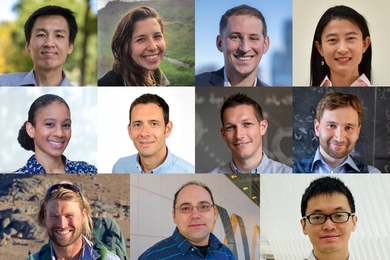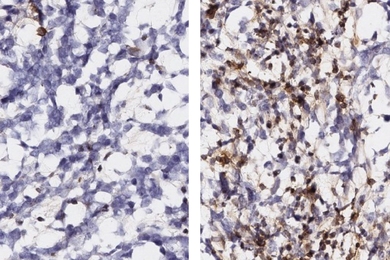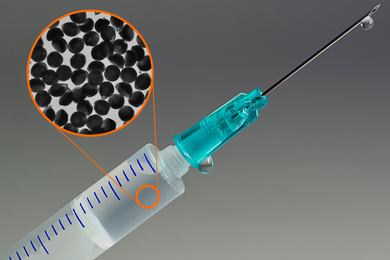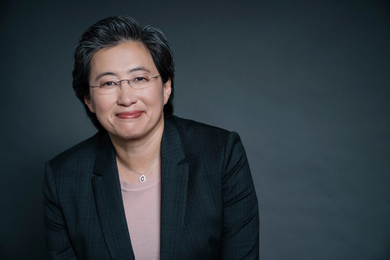The Materials Processing Center (MPC) and the Center for Materials Science and Engineering (CMSE), which together serve more than 150 MIT engineering and science researchers, announced today their merger as the MIT Materials Research Laboratory.
The MIT Materials Research Laboratory (MRL) encompasses research on energy conversion and storage; quantum materials; spintronics; photonics; metals; integrated microsystems; materials sustainability; solid-state ionics; complex oxide electronic properties; biogels; and functional fibers. “These are all interdisciplinary topics in which materials play a critical role,” says MRL Director Carl V. Thompson, who is the Stavros Salapatas Professor of Materials Science and Engineering at MIT. “The focus is on scientific discovery and how to design and make materials that lead to systems that have improved performance or that enable new approaches to existing problems.”
The partnership joins the Materials Processing Center’s wide diversity of materials research, funded by industry, foundations, and government agencies; and the Center for Materials Science and Engineering’s basic science, educational outreach, and shared experimental facilities that are funded under the National Science Foundation Materials Research Science and Engineering Center (MRSEC) program. Combined research volume was $21.5 million for the fiscal year ended on June 30.
“The merger of these two successful centers will streamline the organization of materials research on campus in a manner that will enhance the ability for effective collaboration,” notes Maria Zuber, MIT vice president for research and the E. A. Griswold Professor of Geophysics. The new center will report to Zuber.
Associate professor of materials science and engineering Geoffrey S.D. Beach has been appointed as co-director of the MRL and principal investigator for the MRSEC, succeeding TDK Professor of Polymer Materials Science and Engineering Michael F. Rubner, who is retiring after 16 years as CMSE director.
Both an external advisory board, whose members come from industry, government, and academia, and an internal advisory board, made up of MIT faculty, will guide the MRL. “The formation of the Materials Research Laboratory is very exciting,” says Julia M. Phillips, chair of the MRL External Advisory Board and executive emerita at Sandia National Laboratories. “The MPC and CMSE have each been pillars of MIT’s outstanding materials community for many years. Bringing them together will take them to the next level of collaboration, combining outstanding research with important tools and capabilities to provide a critical connection to MIT.nano as well as a common and enhanced interface between materials at MIT and its industrial partners and academic collaborators.”
The MIT MRL will work hand-in-hand with MIT.nano, the central research facility being built in the heart of the MIT campus due to open in June 2018. “We look forward to working with them not only as an important partner, but as a good next door neighbor,” Thompson says.
Groundbreaking research
The MRL will benefit from the long history of research breakthroughs under CMSE and MPC such as “perfect mirror” technology in 1998 that led to a new kind of fiber optic surgery and a spinout company; OmniGuide Surgical; and the first germanium laser operating at room temperature in 2012. “Research breakthroughs by their very nature are hard to predict, but what we can do is we can create an environment that leads to research breakthroughs,” Thompson says. “The successful model in both MPC and CMSE is to bring together people interested in materials, but with different disciplinary backgrounds. We’ve done that separately, we’ll do it together, and the expectation is that we’ll do it even more effectively.”
MRL supports campus-based work by MIT faculty in three U.S. Manufacturing Innovation Institutes, with a fourth likely in the area of materials sustainability. Current initiatives include the Lightweight Innovations for Tomorrow, the American Institute for Manufacturing Integrated Photonics, and the Advanced Functional Fibers of America, as well as oxide-based fuel cell materials and higher efficiency solar cells.
The annual Materials Day Symposium and Poster Session will be held Wednesday, Oct. 11, 8 a.m. to 6 p.m., in Kresge Auditorium (Building W16) and the Stratton Student Center (Building W20). The theme will be “Frontiers in Materials Research.” In addition to MIT faculty research presentations, there will be a panel discussion featuring senior leaders of MIT’s materials research community. The poster session includes students and postdocs from multiple fields who collaborate on materials-related research.
Mixing old and new
While condensed-matter physicists are pursuing the latest research in exotic states of two-dimensional materials such as magnetically and optically driven topological semimetals, research in metallurgy, the historic foundation for materials science, is also undergoing a revival. For example, Department of Materials Science and Engineering head Christopher A. Schuh developed nanostructured metal alloys and John F. Elliott Professor of Materials Chemistry Donald R. Sadoway pioneered a novel molten-metal battery for grid-level energy storage. “The excellent support from MPC staff over the years has allowed me to get the most from my funding. For me, CMSE has been critical for its superb central user facilities,” Sadoway says. “The merger of these two represents a major consolidation for materials researchers at MIT. I look forward to what comes next.”
Interdisciplinary research groups, which bring faculty from different disciplines together, are a key feature of the MRSEC. At the heart of each group is a set of fundamental hypotheses aimed at resolving key scientific questions about an important emerging area of materials science. Past projects have focused on quantum dots, battery materials, functional fibers, integrated silicon photonics, and many other topics. MRSEC-funded research generated approximately 1,100 new jobs through spinouts such as American Superconductor, OmniGuide Surgical Surgical, QD Vision, and Luminus Devices.
“Our greatest legacy is bringing people together to produce fundamental new science, and then allowing those researchers to explore that new science in ways that may be beneficial to society, as well as to develop new technologies and launch companies,” Rubner says.
New MRL co-director Beach’s research explores complex nanoscale structures in which interactions between different materials — metals and oxides, for example — yield behaviors not found in natural materials that can be the basis for new devices, such as faster magnetic memory. “This is an exciting time for materials research at MIT. I am thrilled by the opportunities that MRL will bring to our community,” Beach says. “By providing a coordinated infrastructure to support the basic research, education, outreach, and industry activities of CMSE and MPC, the new MRL will be far more than the sum of its parts. CMSE has proven its ability to nucleate diverse research teams to pioneer new directions at the forefront of the field. I expect that MRL will further enhance the scope and impact of such coordinated efforts at MIT.”
The MIT Materials Research Laboratory kicks off with a seven-member Industry Collegium, made up of companies who wish to partner more closely with MIT researchers on innovative materials processing research and development projects. “By joining the MPC and CMSE, we’ll have a broader community, and we’ll also have a broader array of research topics with which to engage industry and form new partnerships,” Thompson says.







